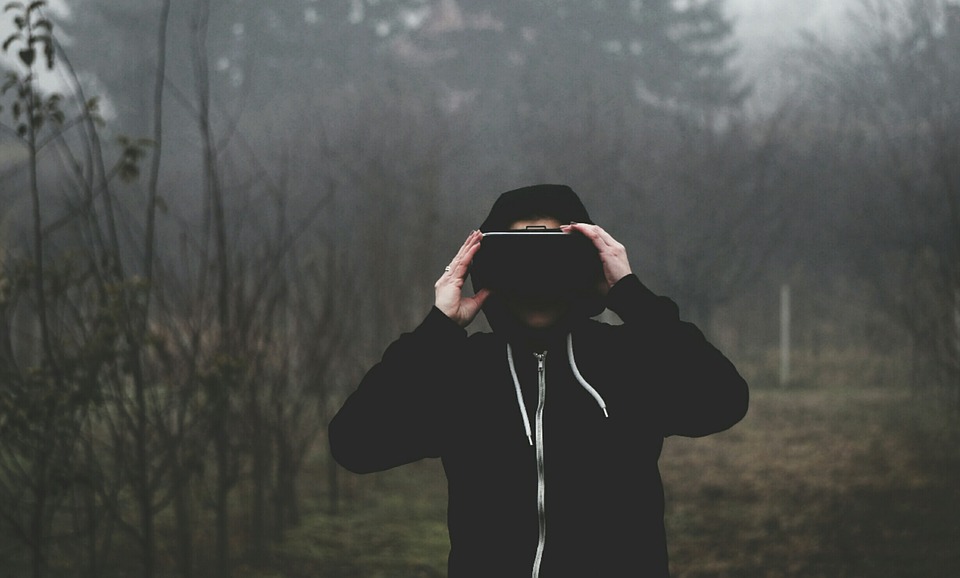Keeping Things Grounded When Anything is Possible
Everybody paying attention knows that killer content is the biggest factor missing from virtual reality today. But what kind of content? Most of the dreams and promises of virtual reality call back to our childhood make-believe sessions where whatever we desired could be ours in an instant. However, the lack of ground rules, costs, consequences or permanence leaves even the best technology feeling much like a ride at Disney World–blissful, yet fleeting. As I’ve been experimenting with 360 development and VR games, I’ve paid special attention to what draws the eye for those outside of the development community. Great storytelling as a core tenant of the market has been expounded by industry leaders, enough that Oculus named their content production house Story Studio. This is true with a caveat–story implies linear narration which may box the content into being another extension of film or scripted entertainment. VR is not an extension of film. It is, at its best, a simulation of the real world. It is an artificial memory, and in this light is where it holds the most power to compel.
Introducing Content Concepts Beyond Immersion
Remember when Survivor first appeared or the Blair Witch Project? That sense that what we were viewing somehow transcended fiction created an entire multi-billion dollar category of engagement that previously did not exist. Terms like “reality TV” and “found footage” entered the vernacular. This was an immersion of the mind, not simply tricks of the senses. We keep speaking of VR as a progression of existing technologies, not taking into account that media consumption has already evolved beyond the flat screen. If we stay in the paradigm box for TV, we get 360 documentaries written and directed by film makers who deal with fixed camera experiences much like 1920s silent films. If we call it gaming, it often becomes a very expensive tech demo compared to the state of the franchises. There again is the new generation of vocabulary like “open world” and “procedurally generated.” Whatever VR becomes when it matures, it needs to appropriate these richer, more contemporary content paradigms to speak with audiences today rather than reinvent the wheel from the ground up.
An Extension of Existing Loves
If we study what VR content looks like today, it is heavily agenda driven, subsidized by causes or companies to promote their brands and agendas. These big messages mean a whole lot to the makers but do they engage a random stranger to put on a headset? Probably not. Right now, campaigns are pushing 360 through mobile FB or Youtube as the primary because it is free to host and has robust classical analytics while making their VR modes a value plus. Modern marketing is about segmentation, lifestyle and reactive data all to show us that while there are trends in behavior, everyone wants to be loved as an individual. That means until new content classes evolve, they will be led by whatever brands, subjects or experiences best speak to who they are as a person. And who are spending the most on their interests? That would be the enthusiasts among us- be it for sports, literature, music or art. I’m ignoring gaming to a degree with the advice that enthusiast gamers will buy into VR but expect that the entertainment should be AAA level and only if you could get their friends on board.
That personal engagement is about letting VR create new connections to our loves that are impossible by other means. This implies intimacy, empathy and an ongoing relationship. Does the 360 Paul McCartney concert do that? Ignoring tech issues, I’d say spending time in his home hearing Beatles stories or being part of an interactive jam session would be more on point. NextVR has been broadcasting some amazing 3D 180 sports events. This may turn into something sustainable as long as they can resolve the social issues with spectator sports. For the big team fan, a better bet could be collecting scanned memorabilia from their favorite players or turning fantasy leagues into something bigger than life. Social is critical, but it can’t just be talking heads in a room without purpose. How can celebrities create new dialog with their biggest fans? How can VR allow family members to relate across generations? How could a buyer get enough visceral information and trust to commit to something they’ve never seen before in person? These are the questions that will catapult VR into a unique medium with repeat-ability and staying power.
